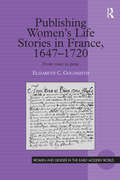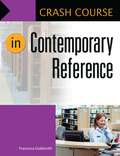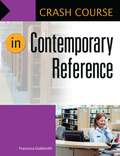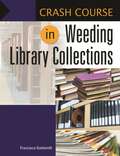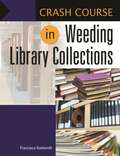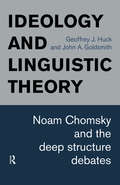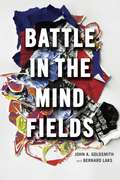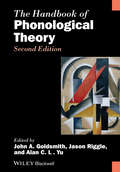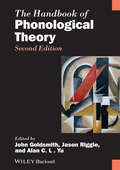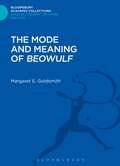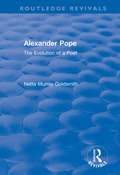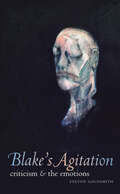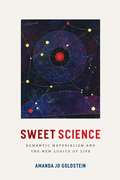- Table View
- List View
Publishing Women's Life Stories in France, 1647-1720: From Voice to Print (Women and Gender in the Early Modern World)
by Elizabeth C. GoldsmithIn this new study, Elizabeth Goldsmith continues her pursuit of issues treated in her earlier books on conversation, epistolary writing, and the female voice in literature. She examines how French women in the seventeenth and early eighteenth centuries first came to publish their private life stories; in doing so, she explores what the writers have to say about why they decide to write about themselves, what they choose to write, how they get their stories circulated and printed, and what they do to defend themselves against the threat to personal reputation and credibility that was implied by such public self-exposure. Goldsmith scrutinizes the autobiographical writing of six women, all of whom were, for different reasons, the objects of fairly intense publicity during their lifetime, at the historical moment when the idea of "publicity" via the printed word was still a new concept. Three of the women-Jeanne des Anges, Marie de l'Incarnation, and Jeanne Guyon-were charismatic religious figures whose writings were widely circulated. The other three writers-the sisters Hortense and Marie Mancini, and Madame de Villedieu-are more worldly, but like their spiritual counterparts, they undertook self-publication as a form of conversation with the world, and a way of participating in other forms of public discourse. Publishing Women's Life Stories in France, 1647-1720 considers the different forms that the life writing of these three women took: autobiographies; letter correspondences (which in four of the six cases have never before been published); trial transcripts; testimonials published as part of other authors' works; and written self-portraits that were circulated among friends. Drawing on the work of Michel de Certeau on voice and communities of readers in the 17th century, as well as the work of Roger Chartier and other historians of the book and print culture, Goldsmith retraces the complicated networks of human interaction that underlie these early a
Crash Course in Contemporary Reference (Crash Course)
by Francisca GoldsmithA fresh, detailed, and thoughtful examination of reference services in the context of evolving community information needs and habits, a changing technological landscape, and new search strategies.Professional practices in the field of library reference services have changed dramatically in the past decade in response to shrinking print reference collections and evolving technology, search strategies, and user needs and interests. This new guide explains all the basics of reference services, covering resource types and awareness of their appropriate uses, collection development and maintenance techniques that support reference service work, the latest online searching techniques, and best practices for service interactions through various platforms, including email, chat, text, phone, and face to face. Additionally, it addresses reference service ethics; communication and conducting reference interviews; important policies related to reference service development, provision, and maintenance; alternative reference service delivery points now in use; and professional service provider networking.Both experienced reference librarians and those new to reference service will benefit from in-depth coverage of recent changes in online reference resources and print-based resources, guidelines for authoritative evaluation of web-based resources, explanations of online catalog searching skills, and tips for reference web page construction. The book also contains an expanded section on making digitized collections accessible and relevant; information on the growing need of members of the general population for help with various federal government access programs ranging from Veterans Affairs and Social Security to health care access, income tax regulation fulfillment, and immigrant documentation; and explanations of copyright in the digital sphere of resource use and transfer.
Crash Course in Contemporary Reference (Crash Course)
by Francisca GoldsmithA fresh, detailed, and thoughtful examination of reference services in the context of evolving community information needs and habits, a changing technological landscape, and new search strategies.Professional practices in the field of library reference services have changed dramatically in the past decade in response to shrinking print reference collections and evolving technology, search strategies, and user needs and interests. This new guide explains all the basics of reference services, covering resource types and awareness of their appropriate uses, collection development and maintenance techniques that support reference service work, the latest online searching techniques, and best practices for service interactions through various platforms, including email, chat, text, phone, and face to face. Additionally, it addresses reference service ethics; communication and conducting reference interviews; important policies related to reference service development, provision, and maintenance; alternative reference service delivery points now in use; and professional service provider networking.Both experienced reference librarians and those new to reference service will benefit from in-depth coverage of recent changes in online reference resources and print-based resources, guidelines for authoritative evaluation of web-based resources, explanations of online catalog searching skills, and tips for reference web page construction. The book also contains an expanded section on making digitized collections accessible and relevant; information on the growing need of members of the general population for help with various federal government access programs ranging from Veterans Affairs and Social Security to health care access, income tax regulation fulfillment, and immigrant documentation; and explanations of copyright in the digital sphere of resource use and transfer.
Crash Course in Weeding Library Collections (Crash Course)
by Francisca GoldsmithWeeding is a perennial challenge for librarians. This book will help you rise to the task by offering you basic instructions, including information on new formats and digital collections.Weeding is often difficult—who can easily decide to discard books and other materials that someone may someday want to borrow? But weeding is essential to keeping your collection healthy and relevant. Perfect for all types of libraries and for both paraprofessionals and librarians unfamiliar with modern weeding methods, this practical guide offers clear guidance that can help you cope with the sometimes-paralytic fear and distaste that can accompany a must-do task. Each of the book's chapters treats a specific concern—for example, weeding electronic collections. Practical matters related to collection maintenance through material and online resource weeding are addressed, as are policy and procedure documentation and communication planning and best practices. You'll read about weeding ethics, using vendor-provided weeding tools, and floating collections. The book also shares advice on training volunteers as weeding assistants and on communicating with library stakeholders about collection maintenance. By showing you how to make weeding a normal part of your library's routine, this book will help you provide your community with a healthier, better circulating, and more valuable collection.
Crash Course in Weeding Library Collections (Crash Course)
by Francisca GoldsmithWeeding is a perennial challenge for librarians. This book will help you rise to the task by offering you basic instructions, including information on new formats and digital collections.Weeding is often difficult—who can easily decide to discard books and other materials that someone may someday want to borrow? But weeding is essential to keeping your collection healthy and relevant. Perfect for all types of libraries and for both paraprofessionals and librarians unfamiliar with modern weeding methods, this practical guide offers clear guidance that can help you cope with the sometimes-paralytic fear and distaste that can accompany a must-do task. Each of the book's chapters treats a specific concern—for example, weeding electronic collections. Practical matters related to collection maintenance through material and online resource weeding are addressed, as are policy and procedure documentation and communication planning and best practices. You'll read about weeding ethics, using vendor-provided weeding tools, and floating collections. The book also shares advice on training volunteers as weeding assistants and on communicating with library stakeholders about collection maintenance. By showing you how to make weeding a normal part of your library's routine, this book will help you provide your community with a healthier, better circulating, and more valuable collection.
Ideology and Linguistic Theory: Noam Chomsky and the Deep Structure Debates (History of Linguistic Thought)
by John A. Goldsmith Geoffrey J. HuckIn The Ideological Structure of Linguistic Theory Geoffrey J. Huck and John A. Goldsmith provide a revisionist account of the development of ideas about semantics in modern theories of language, focusing particularly on Chomsky's very public rift with the Generative Semanticists about the concept of Deep Structure.
Ideology and Linguistic Theory: Noam Chomsky and the Deep Structure Debates (History of Linguistic Thought)
by John A. Goldsmith Geoffrey J. HuckIn The Ideological Structure of Linguistic Theory Geoffrey J. Huck and John A. Goldsmith provide a revisionist account of the development of ideas about semantics in modern theories of language, focusing particularly on Chomsky's very public rift with the Generative Semanticists about the concept of Deep Structure.
Battle in the Mind Fields
by John A. Goldsmith Bernard Laks“We frequently see one idea appear in one discipline as if it were new, when it migrated from another discipline, like a mole that had dug under a fence and popped up on the other side.” Taking note of this phenomenon, John Goldsmith and Bernard Laks embark on a uniquely interdisciplinary history of the genesis of linguistics, from nineteenth-century currents of thought in the mind sciences through to the origins of structuralism and the ruptures, both political and intellectual, in the years leading up to World War II. Seeking to explain where contemporary ideas in linguistics come from and how they have been justified, Battle in the Mind Fields investigates the porous interplay of concepts between psychology, philosophy, mathematical logic, and linguistics. Goldsmith and Laks trace theories of thought, self-consciousness, and language from the machine age obsession with mind and matter to the development of analytic philosophy, behaviorism, Gestalt psychology, positivism, and structural linguistics, emphasizing throughout the synthesis and continuity that has brought about progress in our understanding of the human mind. Arguing that it is impossible to understand the history of any of these fields in isolation, Goldsmith and Laks suggest that the ruptures between them arose chiefly from social and institutional circumstances rather than a fundamental disparity of ideas.
Battle in the Mind Fields
by John A. Goldsmith Bernard Laks“We frequently see one idea appear in one discipline as if it were new, when it migrated from another discipline, like a mole that had dug under a fence and popped up on the other side.” Taking note of this phenomenon, John Goldsmith and Bernard Laks embark on a uniquely interdisciplinary history of the genesis of linguistics, from nineteenth-century currents of thought in the mind sciences through to the origins of structuralism and the ruptures, both political and intellectual, in the years leading up to World War II. Seeking to explain where contemporary ideas in linguistics come from and how they have been justified, Battle in the Mind Fields investigates the porous interplay of concepts between psychology, philosophy, mathematical logic, and linguistics. Goldsmith and Laks trace theories of thought, self-consciousness, and language from the machine age obsession with mind and matter to the development of analytic philosophy, behaviorism, Gestalt psychology, positivism, and structural linguistics, emphasizing throughout the synthesis and continuity that has brought about progress in our understanding of the human mind. Arguing that it is impossible to understand the history of any of these fields in isolation, Goldsmith and Laks suggest that the ruptures between them arose chiefly from social and institutional circumstances rather than a fundamental disparity of ideas.
Battle in the Mind Fields
by John A. Goldsmith Bernard Laks“We frequently see one idea appear in one discipline as if it were new, when it migrated from another discipline, like a mole that had dug under a fence and popped up on the other side.” Taking note of this phenomenon, John Goldsmith and Bernard Laks embark on a uniquely interdisciplinary history of the genesis of linguistics, from nineteenth-century currents of thought in the mind sciences through to the origins of structuralism and the ruptures, both political and intellectual, in the years leading up to World War II. Seeking to explain where contemporary ideas in linguistics come from and how they have been justified, Battle in the Mind Fields investigates the porous interplay of concepts between psychology, philosophy, mathematical logic, and linguistics. Goldsmith and Laks trace theories of thought, self-consciousness, and language from the machine age obsession with mind and matter to the development of analytic philosophy, behaviorism, Gestalt psychology, positivism, and structural linguistics, emphasizing throughout the synthesis and continuity that has brought about progress in our understanding of the human mind. Arguing that it is impossible to understand the history of any of these fields in isolation, Goldsmith and Laks suggest that the ruptures between them arose chiefly from social and institutional circumstances rather than a fundamental disparity of ideas.
Battle in the Mind Fields
by John A. Goldsmith Bernard Laks“We frequently see one idea appear in one discipline as if it were new, when it migrated from another discipline, like a mole that had dug under a fence and popped up on the other side.” Taking note of this phenomenon, John Goldsmith and Bernard Laks embark on a uniquely interdisciplinary history of the genesis of linguistics, from nineteenth-century currents of thought in the mind sciences through to the origins of structuralism and the ruptures, both political and intellectual, in the years leading up to World War II. Seeking to explain where contemporary ideas in linguistics come from and how they have been justified, Battle in the Mind Fields investigates the porous interplay of concepts between psychology, philosophy, mathematical logic, and linguistics. Goldsmith and Laks trace theories of thought, self-consciousness, and language from the machine age obsession with mind and matter to the development of analytic philosophy, behaviorism, Gestalt psychology, positivism, and structural linguistics, emphasizing throughout the synthesis and continuity that has brought about progress in our understanding of the human mind. Arguing that it is impossible to understand the history of any of these fields in isolation, Goldsmith and Laks suggest that the ruptures between them arose chiefly from social and institutional circumstances rather than a fundamental disparity of ideas.
The Handbook of Phonological Theory (Blackwell Handbooks in Linguistics #74)
by John A. Goldsmith Jason Riggle Alan C. L. YuThe Handbook of Phonological Theory, second edition offers an innovative and detailed examination of recent developments in phonology, and the implications of these within linguistic theory and related disciplines. Revised from the ground-up for the second edition, the book is comprised almost entirely of newly-written and previously unpublished chapters Addresses the important questions in the field including learnability, phonological interfaces, tone, and variation, and assesses the findings and accomplishments in these domains Brings together a renowned and international contributor team Offers new and unique reflections on the advances in phonological theory since publication of the first edition in 1995 Along with the first edition, still in publication, it forms the most complete and current overview of the subject in print
The Handbook of Phonological Theory (Blackwell Handbooks in Linguistics #75)
by John Goldsmith Jason Riggle Alan C. L. YuThe Handbook of Phonological Theory, second edition offers an innovative and detailed examination of recent developments in phonology, and the implications of these within linguistic theory and related disciplines. Revised from the ground-up for the second edition, the book is comprised almost entirely of newly-written and previously unpublished chapters Addresses the important questions in the field including learnability, phonological interfaces, tone, and variation, and assesses the findings and accomplishments in these domains Brings together a renowned and international contributor team Offers new and unique reflections on the advances in phonological theory since publication of the first edition in 1995 Along with the first edition, still in publication, it forms the most complete and current overview of the subject in print
The Mode and Meaning of 'Beowulf' (Bloomsbury Academic Collections: English Literary Criticism)
by Margaret E. GoldsmithIn this important contribution to Anglo-Saxon studies Dr Goldsmith presents a fully elaborated and documented interpretation of Beowulf based on the original theories which she has put forward in recent years and which have aroused considerable interest and controversy in scholarly circles. Her view of the poem as the product of a marriage of cultural traditions, a historical epic with allegorical significance, is developed in the context of a close analysis of the doctrinal and literary environment prevailing during the period A.D. 650-800, within which composition is placed. Dr Goldsmith seeks to show that the poem has a unified and coherent structure and in the process resolves many textual and interpretative problems of long standing. Beowulf is clearly seen as a serious work of art standing at the head of the vernacular tradition of allegorical poetry.
Alexander Pope: The Evolution of a Poet (Routledge Revivals)
by Netta Murray GoldsmithThis title was first published in 2002: Making use of the growing body of research in recent years on the nature of creativity, Netta Goldsmith here presents a new view of the famous poet whose personality has long frustrated scholars as elusive. Goldsmith tells the story of Pope's life so as to show the factors-personal and public, psychological and social-which shaped his character and enabled him to secure widespread recognition as a major poet. Discussions of significant works are integrated into the narrative covering main events and key relationships, as well as illustrating points made throughout about Pope's approach to his art. Among other things this book shows how vulnerable Pope felt as a Papist in a time of endemic Jacobite activity, and how his fear of possible prosecution for sedition determined much of his conduct and the way he shaped his career. Alexander Pope: The evolution of a poet not only provides a fresh perspective on Pope, but also on the very nature of literary creativity.
Alexander Pope: The Evolution of a Poet (Routledge Revivals)
by Netta Murray GoldsmithThis title was first published in 2002: Making use of the growing body of research in recent years on the nature of creativity, Netta Goldsmith here presents a new view of the famous poet whose personality has long frustrated scholars as elusive. Goldsmith tells the story of Pope's life so as to show the factors-personal and public, psychological and social-which shaped his character and enabled him to secure widespread recognition as a major poet. Discussions of significant works are integrated into the narrative covering main events and key relationships, as well as illustrating points made throughout about Pope's approach to his art. Among other things this book shows how vulnerable Pope felt as a Papist in a time of endemic Jacobite activity, and how his fear of possible prosecution for sedition determined much of his conduct and the way he shaped his career. Alexander Pope: The evolution of a poet not only provides a fresh perspective on Pope, but also on the very nature of literary creativity.
Blake's Agitation: Criticism and the Emotions
by Steven GoldsmithBlake’s Agitation is a thorough and engaging reflection on the dynamic, forward-moving, and active nature of critical thought. Steven Goldsmith investigates the modern notion that there’s a fiery feeling in critical thought, a form of emotion that gives authentic criticism the potential to go beyond interpreting the world. By arousing this critical excitement in readers and practitioners, theoretical writing has the power to alter the course of history, even when the only evidence of its impact is the emotion it arouses. Goldsmith identifies William Blake as a paradigmatic example of a socially critical writer who is moved by enthusiasm and whose work, in turn, inspires enthusiasm in his readers. He traces the particular feeling of engaged, dynamic urgency that characterizes criticism as a mode of action in Blake’s own work, in Blake scholarship, and in recent theoretical writings that identify the heightened affect of critical thought with the potential for genuine historical change. Within each of these horizons, the critical thinker’s enthusiasm serves to substantiate his or her agency in the world, supplying immediate, embodied evidence that criticism is not one thought-form among many but an action of consequence, accessing or even enabling the conditions of new possibility necessary for historical transformation to occur. The resulting picture of the emotional agency of criticism opens up a new angle on Blake’s literary and visual legacy and offers a vivid interrogation of the practical potential of theoretical discourse.
Blake's Agitation: Criticism and the Emotions
by Steven GoldsmithBlake’s Agitation is a thorough and engaging reflection on the dynamic, forward-moving, and active nature of critical thought. Steven Goldsmith investigates the modern notion that there’s a fiery feeling in critical thought, a form of emotion that gives authentic criticism the potential to go beyond interpreting the world. By arousing this critical excitement in readers and practitioners, theoretical writing has the power to alter the course of history, even when the only evidence of its impact is the emotion it arouses. Goldsmith identifies William Blake as a paradigmatic example of a socially critical writer who is moved by enthusiasm and whose work, in turn, inspires enthusiasm in his readers. He traces the particular feeling of engaged, dynamic urgency that characterizes criticism as a mode of action in Blake’s own work, in Blake scholarship, and in recent theoretical writings that identify the heightened affect of critical thought with the potential for genuine historical change. Within each of these horizons, the critical thinker’s enthusiasm serves to substantiate his or her agency in the world, supplying immediate, embodied evidence that criticism is not one thought-form among many but an action of consequence, accessing or even enabling the conditions of new possibility necessary for historical transformation to occur. The resulting picture of the emotional agency of criticism opens up a new angle on Blake’s literary and visual legacy and offers a vivid interrogation of the practical potential of theoretical discourse.
Sweet Science: Romantic Materialism and the New Logics of Life
by Amanda Jo GoldsteinToday we do not expect poems to carry scientifically valid information. But it was not always so. In Sweet Science, Amanda Jo Goldstein returns to the beginnings of the division of labor between literature and science to recover a tradition of Romantic life writing for which poetry was a privileged technique of empirical inquiry. Goldstein puts apparently literary projects, such as William Blake’s poetry of embryogenesis, Goethe’s journals On Morphology, and Percy Shelley’s “poetry of life,” back into conversation with the openly poetic life sciences of Erasmus Darwin, J. G. Herder, Jean-Baptiste Lamarck, and Étienne Geoffroy Saint-Hilaire. Such poetic sciences, Goldstein argues, share in reviving Lucretius’s De rerum natura to advance a view of biological life as neither self-organized nor autonomous, but rather dependent on the collaborative and symbolic processes that give it viable and recognizable form. They summon De rerum natura for a logic of life resistant to the vitalist stress on self-authorizing power and to make a monumental case for poetry’s role in the perception and communication of empirical realities. The first dedicated study of this mortal and materialist dimension of Romantic biopoetics, Sweet Science opens a through-line between Enlightenment materialisms of nature and Marx’s coming historical materialism.
Sweet Science: Romantic Materialism and the New Logics of Life
by Amanda Jo GoldsteinToday we do not expect poems to carry scientifically valid information. But it was not always so. In Sweet Science, Amanda Jo Goldstein returns to the beginnings of the division of labor between literature and science to recover a tradition of Romantic life writing for which poetry was a privileged technique of empirical inquiry. Goldstein puts apparently literary projects, such as William Blake’s poetry of embryogenesis, Goethe’s journals On Morphology, and Percy Shelley’s “poetry of life,” back into conversation with the openly poetic life sciences of Erasmus Darwin, J. G. Herder, Jean-Baptiste Lamarck, and Étienne Geoffroy Saint-Hilaire. Such poetic sciences, Goldstein argues, share in reviving Lucretius’s De rerum natura to advance a view of biological life as neither self-organized nor autonomous, but rather dependent on the collaborative and symbolic processes that give it viable and recognizable form. They summon De rerum natura for a logic of life resistant to the vitalist stress on self-authorizing power and to make a monumental case for poetry’s role in the perception and communication of empirical realities. The first dedicated study of this mortal and materialist dimension of Romantic biopoetics, Sweet Science opens a through-line between Enlightenment materialisms of nature and Marx’s coming historical materialism.
Sweet Science: Romantic Materialism and the New Logics of Life
by Amanda Jo GoldsteinToday we do not expect poems to carry scientifically valid information. But it was not always so. In Sweet Science, Amanda Jo Goldstein returns to the beginnings of the division of labor between literature and science to recover a tradition of Romantic life writing for which poetry was a privileged technique of empirical inquiry. Goldstein puts apparently literary projects, such as William Blake’s poetry of embryogenesis, Goethe’s journals On Morphology, and Percy Shelley’s “poetry of life,” back into conversation with the openly poetic life sciences of Erasmus Darwin, J. G. Herder, Jean-Baptiste Lamarck, and Étienne Geoffroy Saint-Hilaire. Such poetic sciences, Goldstein argues, share in reviving Lucretius’s De rerum natura to advance a view of biological life as neither self-organized nor autonomous, but rather dependent on the collaborative and symbolic processes that give it viable and recognizable form. They summon De rerum natura for a logic of life resistant to the vitalist stress on self-authorizing power and to make a monumental case for poetry’s role in the perception and communication of empirical realities. The first dedicated study of this mortal and materialist dimension of Romantic biopoetics, Sweet Science opens a through-line between Enlightenment materialisms of nature and Marx’s coming historical materialism.
Sweet Science: Romantic Materialism and the New Logics of Life
by Amanda Jo GoldsteinToday we do not expect poems to carry scientifically valid information. But it was not always so. In Sweet Science, Amanda Jo Goldstein returns to the beginnings of the division of labor between literature and science to recover a tradition of Romantic life writing for which poetry was a privileged technique of empirical inquiry. Goldstein puts apparently literary projects, such as William Blake’s poetry of embryogenesis, Goethe’s journals On Morphology, and Percy Shelley’s “poetry of life,” back into conversation with the openly poetic life sciences of Erasmus Darwin, J. G. Herder, Jean-Baptiste Lamarck, and Étienne Geoffroy Saint-Hilaire. Such poetic sciences, Goldstein argues, share in reviving Lucretius’s De rerum natura to advance a view of biological life as neither self-organized nor autonomous, but rather dependent on the collaborative and symbolic processes that give it viable and recognizable form. They summon De rerum natura for a logic of life resistant to the vitalist stress on self-authorizing power and to make a monumental case for poetry’s role in the perception and communication of empirical realities. The first dedicated study of this mortal and materialist dimension of Romantic biopoetics, Sweet Science opens a through-line between Enlightenment materialisms of nature and Marx’s coming historical materialism.
Sweet Science: Romantic Materialism and the New Logics of Life
by Amanda Jo GoldsteinToday we do not expect poems to carry scientifically valid information. But it was not always so. In Sweet Science, Amanda Jo Goldstein returns to the beginnings of the division of labor between literature and science to recover a tradition of Romantic life writing for which poetry was a privileged technique of empirical inquiry. Goldstein puts apparently literary projects, such as William Blake’s poetry of embryogenesis, Goethe’s journals On Morphology, and Percy Shelley’s “poetry of life,” back into conversation with the openly poetic life sciences of Erasmus Darwin, J. G. Herder, Jean-Baptiste Lamarck, and Étienne Geoffroy Saint-Hilaire. Such poetic sciences, Goldstein argues, share in reviving Lucretius’s De rerum natura to advance a view of biological life as neither self-organized nor autonomous, but rather dependent on the collaborative and symbolic processes that give it viable and recognizable form. They summon De rerum natura for a logic of life resistant to the vitalist stress on self-authorizing power and to make a monumental case for poetry’s role in the perception and communication of empirical realities. The first dedicated study of this mortal and materialist dimension of Romantic biopoetics, Sweet Science opens a through-line between Enlightenment materialisms of nature and Marx’s coming historical materialism.
Sweet Science: Romantic Materialism and the New Logics of Life
by Amanda Jo GoldsteinToday we do not expect poems to carry scientifically valid information. But it was not always so. In Sweet Science, Amanda Jo Goldstein returns to the beginnings of the division of labor between literature and science to recover a tradition of Romantic life writing for which poetry was a privileged technique of empirical inquiry. Goldstein puts apparently literary projects, such as William Blake’s poetry of embryogenesis, Goethe’s journals On Morphology, and Percy Shelley’s “poetry of life,” back into conversation with the openly poetic life sciences of Erasmus Darwin, J. G. Herder, Jean-Baptiste Lamarck, and Étienne Geoffroy Saint-Hilaire. Such poetic sciences, Goldstein argues, share in reviving Lucretius’s De rerum natura to advance a view of biological life as neither self-organized nor autonomous, but rather dependent on the collaborative and symbolic processes that give it viable and recognizable form. They summon De rerum natura for a logic of life resistant to the vitalist stress on self-authorizing power and to make a monumental case for poetry’s role in the perception and communication of empirical realities. The first dedicated study of this mortal and materialist dimension of Romantic biopoetics, Sweet Science opens a through-line between Enlightenment materialisms of nature and Marx’s coming historical materialism.
Hebrew Poems from Spain (The Littman Library of Jewish Civilization)
by David GoldsteinThe years 950-1200 are often called the Golden Age of the Jews in Spain. During this period, the Jews reached a peak of achievement in all aspects of their life—political, spiritual, and cultural. They produced great works of literature and philosophy; their poetry represents a peak of literary achievement unparalleled in Hebrew until the twentieth century. The poets of the Golden Age forged the language of the Hebrew Bible into a magnificent instrument for the expression of every facet of their experience--love and friendship, war and exile, philosophy and prayer. Their poems reflect their overarching consciousness of Israel’s relationship with God and their deep concern with the fate of the Jewish people in exile. Not until modern times did Hebrew poetic genius flourish again with such freedom and with such intensity. This volume conveys in modern English something of the greatness of that literature while as far as possible preserving the poetic values and beauty of the Hebrew original. Brief notes on the work of each of the thirteen poets represented put the poems in their proper perspective and do much to elucidate their meaning. The poets included are Dunash Halevi ben Labrat, Joseph ibn Abithur, Isaac ibn Kalpon, Samuel Hanagid, Solomon ibn Gabirol, Isaac ibn Gi’at, Moses ibn Ezra, Judah Halevi, Abraham ibn Ezra, Joseph ibn Zabara, Judah Alharizi, Shem Tob ben Palquera, and Todros ben Judah Abulafia. ‘Remains the only anthology in English devoted entirely to the Golden Age with selections from all the major and some minor poets presented in verse translations. The book is a gift to the academic world and to all readers interested in the literary achievements of the Jews.’ From the Foreword by Raymond Scheindlin
